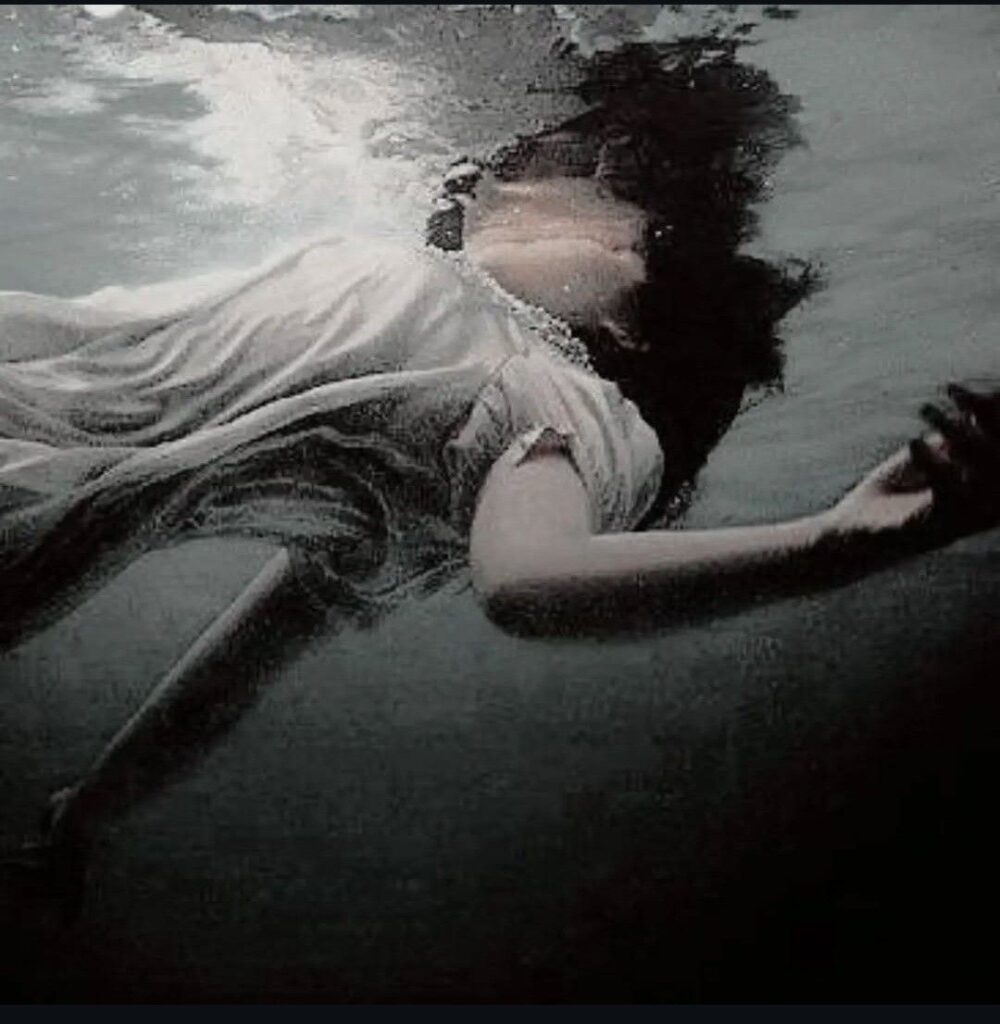There’s something intoxicating about fear — not the paralyzing kind that freezes you in place, but the delicious kind that makes your heart race, your breath quicken, and your imagination spiral into darkness.
That’s the magic of suspense — the unseen heartbeat of every great horror story. The real horror isn’t in the monster’s claws or the scream in the dark; it’s in the waiting. It’s in not knowing when the monster will strike — or whether it’s even real at all.
In this deep dive from Riya’s Blogs, we’ll explore The Art of Building Suspense in Horror Writing — how authors, screenwriters, and filmmakers weave dread into every word, image, and silence. We’ll look at timeless examples, uncover the psychology behind fear, and reveal practical suspense techniques in writing you can apply to your own stories.
🎭 What Is Suspense, Really?
Before you learn how to build it, you must understand what suspense means.
Building suspense meaning: it’s the emotional tension created when readers anticipate what might happen — but don’t yet know when or how. It’s that tug-of-war between curiosity and dread, hope and horror.
Unlike shock (which is quick and brutal), suspense is slow-burn anxiety. It’s the drumbeat beneath the floorboards, the whisper behind the wall. It keeps readers turning pages, hearts pounding.
The art horror genre thrives on this principle. In The Others, Hereditary, or The Haunting of Hill House, the fear doesn’t come from jump scares alone. It comes from anticipation. From the feeling that something dreadful is always about to happen — but never quite does.
🧠 The Psychology of Fear and Anticipation
Suspense works because it hijacks our fight-or-flight response — but without resolution. Your body prepares for danger (heart rate, adrenaline, hyperfocus), yet the danger never arrives. You’re left in a heightened emotional state, hungry for closure.
That’s why good horror writers delay gratification. They let you peek at the danger but never show you the full picture.
In the reader’s mind, the imagination fills the blanks — and nothing is more terrifying than what we invent ourselves.
As Alfred Hitchcock once explained:
“There is no terror in the bang, only in the anticipation of it.”
That quote sums up The Art of Building Suspense in Horror Writing. Horror isn’t about the loudest moment — it’s about the quietest second before it.
🕯️ The Building Blocks of Suspense
Let’s explore some of the 7 suspense techniques that create unforgettable horror writing.
1. Control of Information
Suspense is all about managing what the reader knows. Tell them something, but not everything.
When readers know more than the characters (dramatic irony), they’re anxious for when the truth will unfold.
When readers know less, they’re trapped in mystery.
📘 Example: In Stephen King’s It, readers sense the malevolent force before the characters do. Each glimpse of Pennywise builds a dread that becomes unbearable long before the final confrontation.
2. Pacing — The Rhythm of Fear
A horror story is a dance between stillness and movement. Too fast, and suspense evaporates; too slow, and tension dulls.
The trick is in rhythmic pacing — moments of calm (to let fear breathe) followed by bursts of terror (to release it).
💡 Suspense writing examples: Shirley Jackson’s The Lottery begins as a casual small-town gathering. The slow pacing lulls readers into comfort — until the horrifying ritual emerges. The dread comes not from the twist itself, but from how long it takes to arrive.
3. Foreshadowing — Promise of the Unknown
Foreshadowing plants unease early. It’s the story whispering, “Something terrible is coming.”
📘 How to build suspense in a short story? Drop small clues:
- A flickering light that never gets fixed.
- A photograph with a missing face.
- A strange lullaby a child hums at night.
Each one hints at a deeper menace, keeping readers alert.
4. Setting the Stage — The Horror Building
A horror writer’s greatest weapon is atmosphere. The place itself becomes a character — a haunted house, a lonely forest, an abandoned asylum.
The phrase horror building captures this perfectly. The creak of old floors, the chill of damp walls, the silence between footsteps — these transform ordinary spaces into nightmares.
🎨 The horror painting: Imagine writing as painting — every description adds a brushstroke of dread. The key isn’t to show blood but to suggest rot, to evoke decay and disquiet.
Think of The Shining’s Overlook Hotel — more alive than its guests, more sinister than its ghosts. That’s the art of the horror building story.
5. Character Vulnerability
Suspense thrives when danger feels personal. Readers must care about the characters enough to fear for them.
Show their weaknesses: a child afraid of the dark, a mother clinging to sanity, a skeptic facing the supernatural.
The more real the fear, the sharper the suspense.
📖 The Babadook and The Witch are perfect modern examples. The horror mirrors internal struggles — grief, repression, guilt. Suspense grows not from monsters, but from human fragility.
6. Withholding the Monster
In many dark tales, the monster is most terrifying when unseen.
Once the reader knows what it looks like, fear loses some of its power.
That’s why in Jaws, the shark appears fully only near the end. The ocean’s vast emptiness becomes the true terror.
In writing, you can use this too — let sound, shadow, and suggestion do the work.
7. Silence and Stillness
One of the most overlooked suspense techniques in writing is silence.
What happens between sounds is often more terrifying than the noise itself.
Writers use ellipses, pauses, and short sentences to mimic a heartbeat. In film, silence before a scare amplifies fear — how to create suspense in film depends as much on what’s not heard as what is.
🔮 How to Start a Suspense Story: Examples and Openings
The first line should unsettle the reader before they even understand why. It’s the quiet before the storm.
Some how to start a suspense story examples:
- “The first thing she noticed was the absence of birds.”
- “He woke up to find his reflection smiling back.”
- “The house hadn’t been locked in years — until tonight.”
Each line suggests a mystery and raises a question. That question becomes the hook — the reader needs to know what happens next.
If you’re wondering how to build suspense in a horror story from the start, remember: clarity kills fear. Mystery feeds it. Give readers half the truth — just enough to make them lean closer.
🕸️ The Layered Craft of Suspense in Horror
Layer 1: The Surface Fear
This is what’s visible: the killer, the curse, the shadow. It’s what readers think they’re afraid of.
Layer 2: The Hidden Fear
Beneath the monster lies metaphor — grief, isolation, guilt, societal decay. The fear that resonates long after the lights are back on.
In Get Out, the horror isn’t only abduction — it’s racial exploitation. In The Haunting of Hill House, it’s grief and trauma. The suspense grows from what’s unspoken as much as what’s shown.
That’s the secret of The Art of Building Suspense in Horror Writing: every surface scare should hide something real underneath.
🔥 The Anatomy of a Suspense Scene
Let’s break down a short suspense writing example scene to understand the mechanics.
The hallway light flickered again.
She counted the seconds — one, two, three — before it dimmed.
The air smelled like burnt wires.
Behind her, the floor creaked.
She turned.
Nothing.
Just shadows breathing.
Then — a whisper. Closer this time.
What’s happening here?
- Sensory detail: The reader can smell, hear, and feel the fear.
- Timing: The pauses between sentences mimic heartbeats.
- Restraint: The threat isn’t shown — only implied.
- Perspective: We’re close to the character’s fear — that intimacy creates empathy and tension.
This is how to build suspense in a horror story — not by describing the monster, but by manipulating the reader’s expectation.
🎬 From Page to Screen — How to Create Suspense in Film
Film translates written tension into visual language.
Directors use lighting, camera movement, and sound to replicate literary suspense techniques.
🎥 How to create suspense in film involves:
- Lighting: Shadows hide danger, overexposure blinds the audience.
- Camera Angles: A low angle makes us feel powerless; a lingering close-up forces discomfort.
- Sound Design: Crescendos build tension; silence breeds unease.
- Editing Pace: Quick cuts mimic panic, slow pans sustain dread.
In Psycho, the shower scene isn’t horrifying because of the knife — it’s the editing rhythm. In The Conjuring, tension builds through silence, flickering lights, and slow reveals. Both follow The Art of Building Suspense in Horror Writing, just through a visual medium.
🪞 Why Suspense Matters More Than Shock
Horror that relies solely on blood and gore may disgust, but it rarely lingers.
Suspense, on the other hand, haunts.
Readers remember the moments they couldn’t breathe.
That’s why the most timeless horror tales — Dracula, Rebecca, The Turn of the Screw — still grip us centuries later. They understand the rhythm of dread, the pulse of suspense.
🧩 Building Suspense Step-by-Step: A Writer’s Checklist
Here’s a guide for any writer hoping to master The Art of Building Suspense in Horror Writing:
- Start with a question.
Every story begins with something unknown. - Limit perspective.
Keep readers close to one character — their fear becomes ours. - Use sensory writing.
Sound, smell, and touch evoke primal fear faster than sight. - Play with time.
Slow down at key moments — draw out the inevitable. - Control revelation.
Never answer every question. Let some mysteries fester. - Make setting a character.
The horror building should breathe. - End on an echo.
Leave the reader with unease, not closure.
🎨 Suspense as an Art Form
Think of suspense as painting — the horror painting — every brushstroke deliberate, every shadow meaningful. You blend light and dark until they blur. The reader doesn’t just see the image — they feel it.
The greatest horror storytellers — Poe, Jackson, King, Lovecraft — were all artists of anticipation. They understood that fear isn’t a scream; it’s a whisper you can’t ignore.
🌒 Why Readers Crave Suspense
Why do we willingly dive into fear?
Because suspense gives us control over chaos.
In real life, fear paralyzes — in stories, it thrills. We survive the storm, close the book, and realize we’re still alive.
That’s the strange catharsis of horror — it teaches us about survival, vulnerability, and the edges of the human mind.
When readers feel the goosebumps rise, you’ve succeeded in more than storytelling. You’ve made them feel alive.
🕰️ Final Thoughts: The Eternal Pulse of Dread
Suspense is timeless. It’s the candlelight flickering in a darkened room, the footstep that stops just outside the door, the silence before the scream.
Whether it’s on paper, on screen, or whispered in the dark, the same rules apply — the less we see, the more we fear.
The art of building suspense in horror writing isn’t about horror itself — it’s about human emotion. It’s about taking readers by the hand, leading them through darkness, and making them want to keep walking.
And perhaps that’s why horror will never die — because suspense lives in all of us.
So next time you write, remember: don’t show the monster.
Let your readers hear it breathe.

Want to read a bit more? Find some more of my writings here-
60 Relationship Quotes That Cover Every Kind of Love
World AIDS Day Messages — Dec 1: Words That Heal, Unite, and Inspire Change
The One Who Loved More: A Poem About Uneven Love
I hope you liked the content.
To share your views, you can simply send me an email.
Thank you for being keen readers to a small-time writer.







